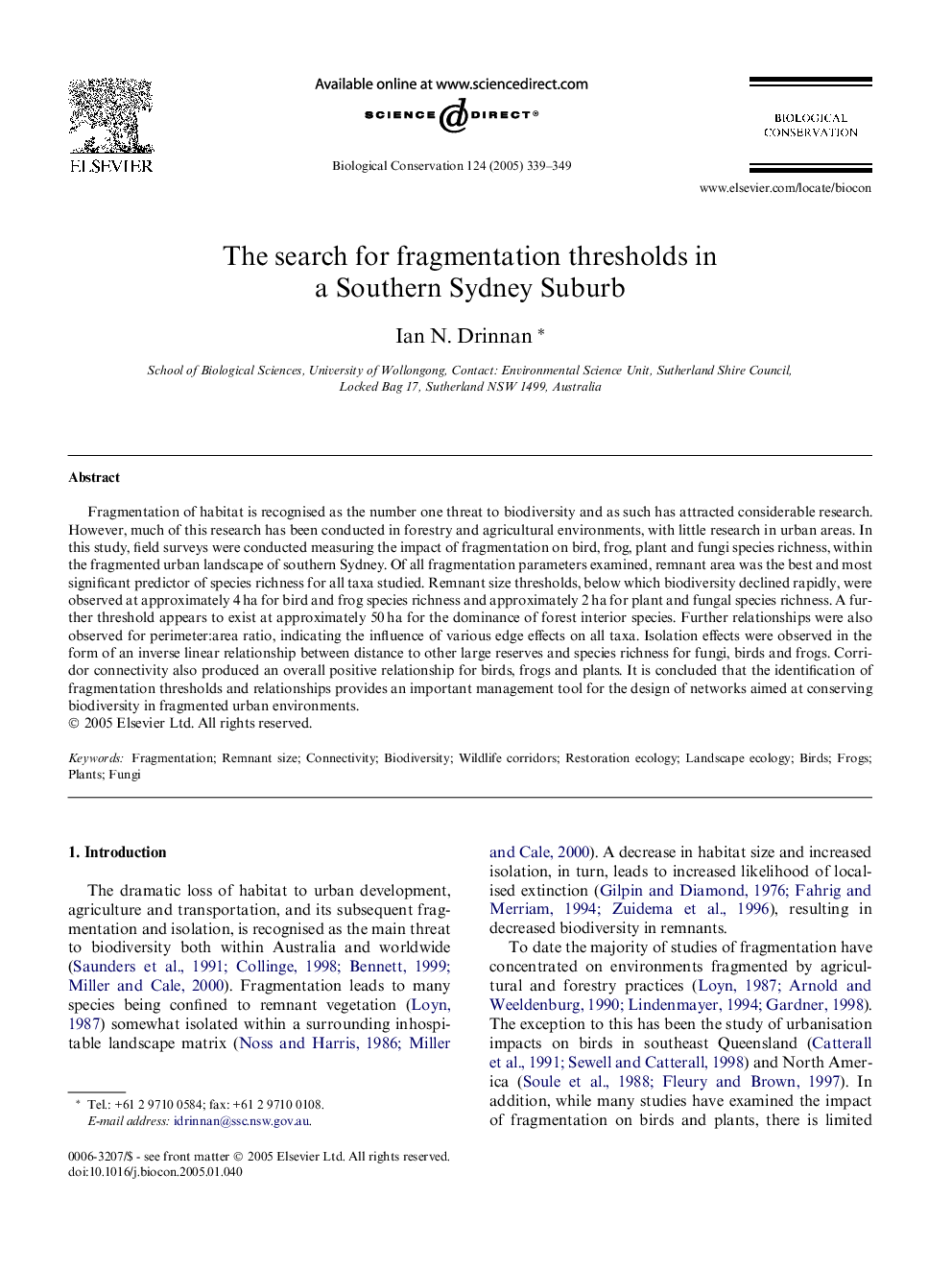| کد مقاله | کد نشریه | سال انتشار | مقاله انگلیسی | نسخه تمام متن |
|---|---|---|---|---|
| 9445923 | 1304634 | 2005 | 11 صفحه PDF | دانلود رایگان |
عنوان انگلیسی مقاله ISI
The search for fragmentation thresholds in a Southern Sydney Suburb
دانلود مقاله + سفارش ترجمه
دانلود مقاله ISI انگلیسی
رایگان برای ایرانیان
کلمات کلیدی
موضوعات مرتبط
علوم زیستی و بیوفناوری
علوم کشاورزی و بیولوژیک
بوم شناسی، تکامل، رفتار و سامانه شناسی
پیش نمایش صفحه اول مقاله

چکیده انگلیسی
Fragmentation of habitat is recognised as the number one threat to biodiversity and as such has attracted considerable research. However, much of this research has been conducted in forestry and agricultural environments, with little research in urban areas. In this study, field surveys were conducted measuring the impact of fragmentation on bird, frog, plant and fungi species richness, within the fragmented urban landscape of southern Sydney. Of all fragmentation parameters examined, remnant area was the best and most significant predictor of species richness for all taxa studied. Remnant size thresholds, below which biodiversity declined rapidly, were observed at approximately 4Â ha for bird and frog species richness and approximately 2Â ha for plant and fungal species richness. A further threshold appears to exist at approximately 50Â ha for the dominance of forest interior species. Further relationships were also observed for perimeter:area ratio, indicating the influence of various edge effects on all taxa. Isolation effects were observed in the form of an inverse linear relationship between distance to other large reserves and species richness for fungi, birds and frogs. Corridor connectivity also produced an overall positive relationship for birds, frogs and plants. It is concluded that the identification of fragmentation thresholds and relationships provides an important management tool for the design of networks aimed at conserving biodiversity in fragmented urban environments.
ناشر
Database: Elsevier - ScienceDirect (ساینس دایرکت)
Journal: Biological Conservation - Volume 124, Issue 3, August 2005, Pages 339-349
Journal: Biological Conservation - Volume 124, Issue 3, August 2005, Pages 339-349
نویسندگان
Ian N. Drinnan,